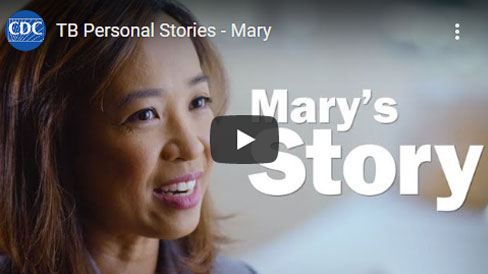Tuberculosis

Anyone can get TB. These stories highlight the personal experiences of people who were diagnosed and treated for latent TB infection and TB disease, as well as the work of TB control professionals.

Tuberculosis (TB) is caused by bacterium (germ) called mycobacterium tuberculosis. TB most often affects the lungs but it can also affect other parts of the body, such as the brain, kidneys or spine.
Medical Surveillance
Medical surveillance is needed for persons who have been assessed as having inactive tuberculosis (TB) on their immigration medical exam (IME) or have had active TB disease in the past. Immigration, Refugees and Citizenship Canada (IRCC) determines if you need medical surveillance as a “condition of landing”. This means you need a medical assessment by a health care provider once you arrive in Canada.
TB disease may be spread to others. It’s important to confirm you are healthy and don’t have active TB disease. Once you have had your medical assessment the “condition of landing” is removed from your immigration file.
Medical Surveillance Details
IRCC needs your contact information in Canada to start the medical surveillance process. More information about the medical surveillance process, including how to contact the IRCC, can be found on the Health Canada website.
Visit the Ministry of Health Public Health Unit Locator.
If you have no symptoms of active TB
Call Hamilton Public Health Services at 905-546-2063 to report for medical surveillance and ask to speak with a TB nurse. Please wait 1 month from the day you arrived to Canada before calling. Please do not show up to our office in-person, as we do not perform medical assessments.
If you have symptoms of TB
Call 905-546-2063 immediately and ask to speak with a TB nurse.
Symptoms of TB can include: fever, worsening cough, night sweats, feeling tired, weight loss, decreased or no appetite.
This process may take as long as 9 months. If you live in the Hamilton area, Immigration, Refugees and Citizenship Canada (IRCC) will inform Hamilton Public Health Services (HPHS) that you are in Canada and need medical surveillance for inactive TB. It takes about 1 month for IRCC to notify HPHS.
When you report to HPHS, they will instruct you to call the Wilson Medical Centre and make a TB surveillance appointment. Once you have been assessed at the Wilson Medical Centre a report is sent to HPHS.
Your report will be reviewed and if no further follow-up is needed, IRCC will be informed that you have completed medical surveillance. The Public Health Liaison Unit at IRCC will then send you an email confirming you have completed medical surveillance.
Wilson Medical Centre
130 Wilson St, Hamilton, ON
Call 905-526-6250
The cost of your medical surveillance appointment may be covered by the Ontario Health Insurance Plan (OHIP). To find out if you are eligible go to Get a health card or call the Service Ontario INFOline at 1-866-532-3161. Medical surveillance may also be covered by the Interim Federal Health Program (IFHP), if you are eligible.
If you have private health insurance, call your insurance provider, and ask if medical surveillance for inactive TB is covered by your policy.
If you are not eligible for OHIP, do not have IFH or private insurance coverage, there is a cost for the TB surveillance appointment and the tests. Usually, a chest x-ray is ordered, however, other tests may be ordered if needed. The cost varies but is about $200.
If you don’t complete medical surveillance, it may impact any current or new immigration applications you make. For example, your Canadian citizenship application could be delayed until you complete the medical surveillance process.
If you leave Canada before you complete medical surveillance, it is important to let Hamilton Public Health Services know by calling the ID program at 905-546-2063 Monday through Friday, 8:30 am to 4:30 pm.
Hamilton Public Health Services will inform the IRCC once you have attended your medical surveillance appointment and your test results have been assessed. The IRCC Public Health Liaison Unit will then email you within 2 months to confirm you have completed the medical surveillance process.
There is no longer a waiting period for OHIP coverage. If you are eligible, you will have immediate health insurance coverage. Apply for OHIP and get a health card.
More information about the IFH program can be found at Health care - Refugees.
Information on how to find a health care provider can be found at Find a doctor or nurse practitioner.
